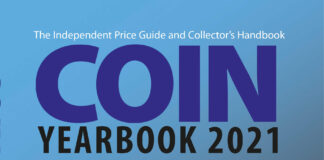
For thousands of years, the Rhine was more of a road than a border. No wonder that during the late La Tène period, and thus between about 150 and 15 BC, a dense network of economically closely connected settlements evolved in this area. 162 archaeological sites, including 46 settlements bear witness to this. In 2000 and 2001, the Baden-Württemberg State Office for Cultural Heritage Management carried out excavations at Riegel am Kaiserstuhl, which is regarded as the region’s central place due to its fortification, the coin production and two long distance roads. Not only coins of the type “usually” found during excavations came to light, but also – very spectacular – a vessel in which 27 imitations of Philippou staters made of electrum were hidden.
What role did these coins play in the economic system of that time? And how came it about that they assumed this role over the course of the preceding two centuries? Falko Weis wants to answer these exciting questions in his publication on the coin find of Riegel.
A Hoard of Gold Coins Found During an Excavation
If you are interested in hoards, you probably know about the frustrating fact that they are usually not found during regular excavations, but by accident in the course of some kind of construction works or by detectorists. If you think about it, you will understand why that is the case: Of course, there are many people who hide their treasures in their front yard. However, these treasures will usually be recovered because other people living in the house or descendants know about the hiding place. In contrast, it is much less likely that a hoard buried in a secret place for unknown reasons will be recovered if the owner died unexpectedly and did not have the time to tell anybody about the hiding place. Therefore, the archaeological world is all the more delighted when – for once – a hoard is found in the context of an excavation. That is why Riegel’s “hoard of gold coins” is at the centre of Falko Weis’ work, even though, actually, those coins are not made of gold but of electrum and their style is far away from their Macedonian model.
A Coin Is a Coin Is a Coin Is a Coin?
Falko Weis’ publication on the coin hoard was written in a state-of-the-art manner. However, his book is far more than a naive monograph on a coin hoard. He raises the question about the function of Celtic coins and about the significance of the hoard of Riegel in the context of this discussion.
For – at this point the author quotes the well-known sociologist Marcel Mauss – “Money is by no means a material and physical fact; it is essentially a social fact”. But since we do not have any written testimonies of the Celts themselves, the social context of Celtic coins has to be reconstructed with the help of the few Roman notes and the abundant archaeological evidence.
And therefore, we have to consider the possibilities and limitations of archaeology. Whereas the circumstances of the find are clear, their interpretation is not. Today it is widely accepted among scholars that gold coins initially entered the Celtic society as a form of salary, however, the Celts did not use them as means of payment but as objects of prestige like golden torcs and golden pieces of jewellery. Due to the permanent contact with other money-using peoples, the Celts got used to this medium. Therefore, coins became measures of value and objects of exchange in the Celtic society. Weis considers the coin hoard of Riegel a testimony to the fact that Celts used coins as means of payment in the late La Tène period.
You see, the book is very appealing to all those who have deep interest in Celtic coins.
You may order the book at Verlag Marie Leidorf GmbH at the price of €45.80.




